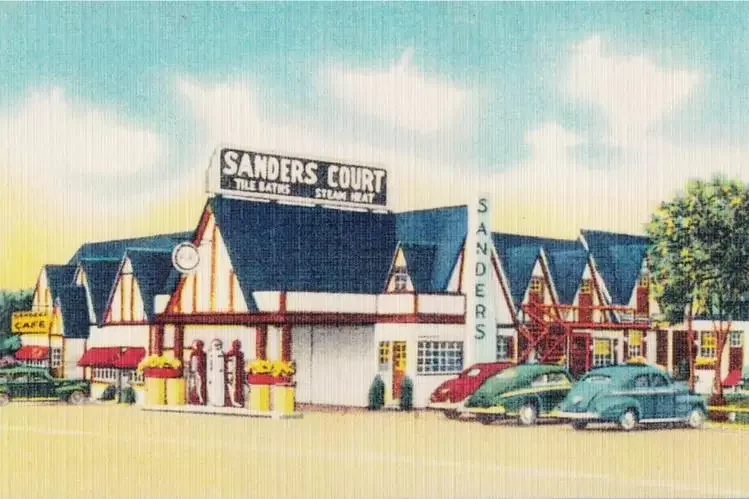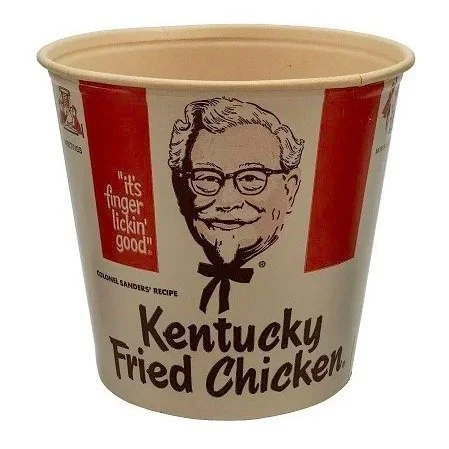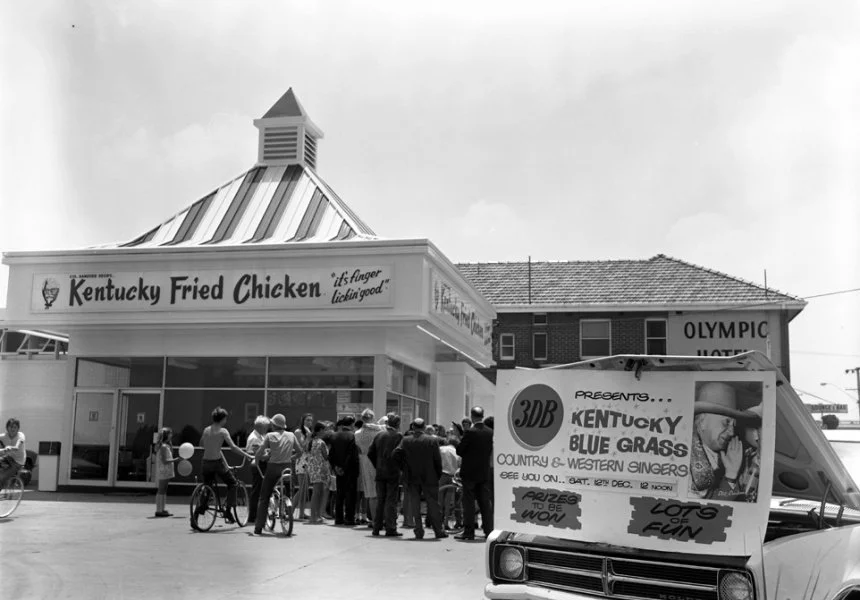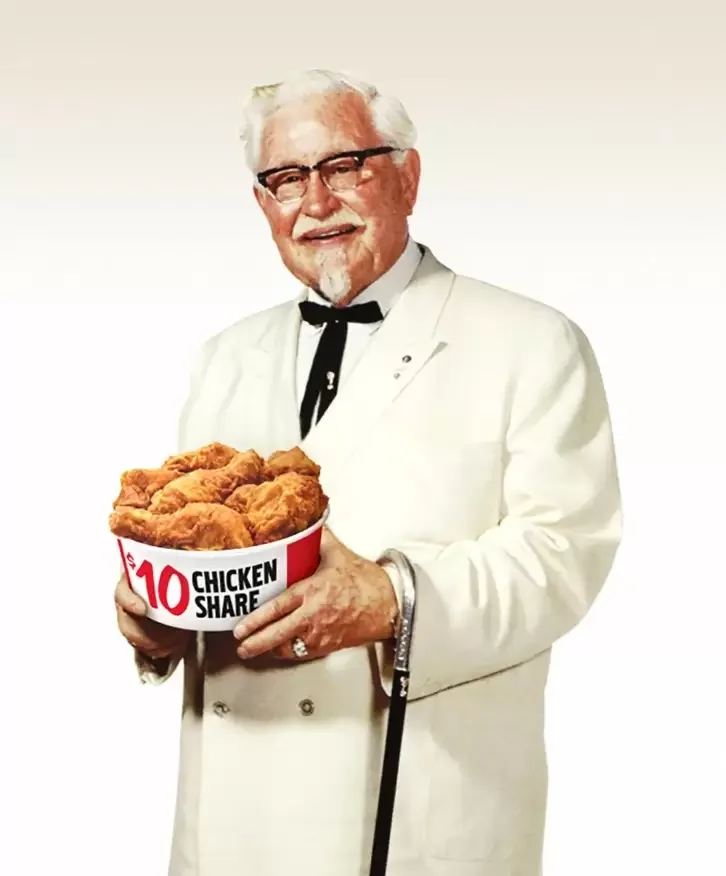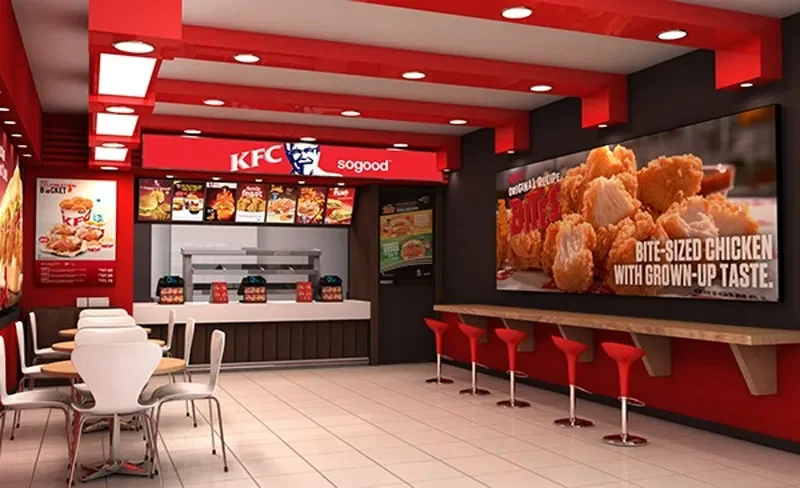From Gas Station Kitchen to Global Icon: The Story of Kentucky Fried Chicken
Few brands have achieved the level of global recognition and cultural influence that Kentucky Fried Chicken has. The red-and-white buckets, the smiling face of Colonel Harland Sanders, and the promise of “finger-lickin’ good” chicken are instantly recognizable from Louisville to Lagos. But KFC’s journey from a small roadside kitchen to a worldwide franchise powerhouse is a classic American tale of grit, branding genius, and a secret recipe that changed fast food forever.
The Colonel’s Beginnings
Harland Sanders was not a man who found success overnight. Born in 1890 in Henryville, Indiana, he worked a string of jobs—including farmhand, streetcar conductor, insurance salesman, and even amateur lawyer—before finding his calling in food. In the depths of the Great Depression, Sanders began cooking for hungry travelers at a humble service station in Corbin, Kentucky.
With no formal restaurant space, he served meals from his own dining table to customers who stopped for gas. Word quickly spread about his Southern-style fried chicken, cooked in a pressure fryer for speed without sacrificing flavor. By 1936, the Governor of Kentucky had bestowed upon him the honorary title of “Colonel,” a nod to his culinary reputation and contribution to the state’s culture.
The Secret Recipe That Built an Empire
In 1940, Sanders perfected the blend that would define the brand: 11 herbs and spices. While the exact combination remains one of the most closely guarded trade secrets in the food industry, the flavor profile—crispy, savory, and addictive—became the cornerstone of KFC’s identity.
But the Colonel wasn’t just a great cook; he was a relentless promoter. Traveling from town to town, he personally pitched his chicken to restaurant owners, often cooking it for them on the spot. In exchange for adopting his recipe and cooking method, operators paid him a nickel for every chicken sold.
The Birth of the Franchise Model
KFC’s true explosion came through franchising. In 1952, Sanders partnered with Pete Harman, a restaurant owner in Salt Lake City, Utah, who became the first official KFC franchisee. Harman coined the now-famous phrase “finger-lickin’ good” and developed the iconic bucket packaging. By the early 1960s, Sanders had over 600 franchised locations across the U.S. and Canada.
This success caught the attention of investors, and in 1964, at age 73, Sanders sold KFC for $2 million—though he remained the brand’s public face and global ambassador for decades.
KFC in American History and Pop Culture
KFC isn’t just a fast-food chain—it’s part of the American story. During the post-war economic boom, its model of quick, affordable, family-friendly dining mirrored the rise of car culture, suburban expansion, and a growing appetite for convenience.
The brand’s imagery and marketing embedded themselves in pop culture:
Colonel Sanders became one of the most recognizable brand mascots in the world, later portrayed by a rotating cast of celebrities in humorous ad campaigns.
KFC played a role in globalizing American cuisine, becoming one of the first U.S. fast-food chains to establish a presence in countries like Japan, where “KFC for Christmas” became a beloved holiday tradition.
Its simple bucket design became a visual shorthand for comfort food, shared meals, and Americana.
Lessons from KFC’s Franchise Success
For aspiring franchise owners, KFC’s story offers several takeaways:
Consistency Is King – The Colonel’s recipe, cooking method, and brand voice stayed consistent across locations, building trust with customers.
Brand Personality Matters – KFC’s success was tied not just to the food, but to the persona of the Colonel—a living embodiment of the brand.
Adaptation Fuels Longevity – From drive-thrus to international menu customization, KFC has evolved without losing its core identity.
Franchising Scales Faster – Sanders’ decision to franchise allowed rapid expansion with relatively low capital investment, proving the power of partnerships in business growth.
Finger-Lickin’ Legacy
From a modest service station kitchen in Kentucky to more than 27,000 locations worldwide, KFC’s rise is a testament to entrepreneurial vision, disciplined branding, and the timeless appeal of great food. For entrepreneurs looking to break into franchising, the Colonel’s journey is proof that with the right product, a clear brand identity, and a scalable model, you can build something that not only feeds people—but becomes part of cultural history.
Ready to Cook Up Your Own Franchise Success?
At Bad Wolfe, we help aspiring and seasoned entrepreneurs identify, evaluate, and launch franchises that align with their goals, values, and lifestyle. Whether you’re looking for the next “finger-lickin’ good” opportunity or a proven brand to build your future on, we’ll guide you from first conversation to grand opening—and beyond.
Let’s start building your legacy. Contact Bad Wolfe today to explore franchise opportunities that could make you the next big success story.


